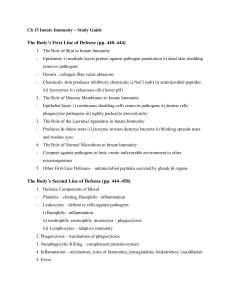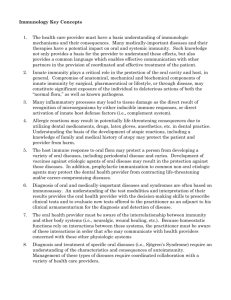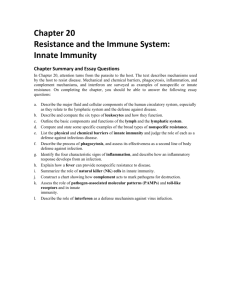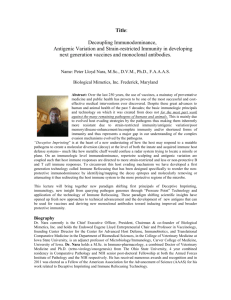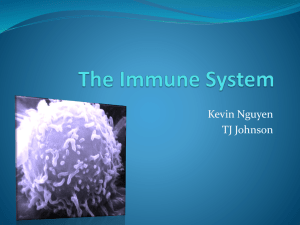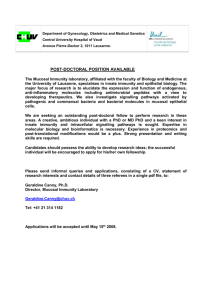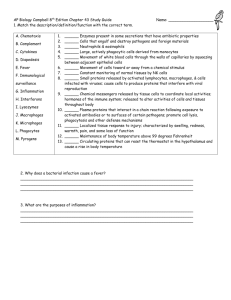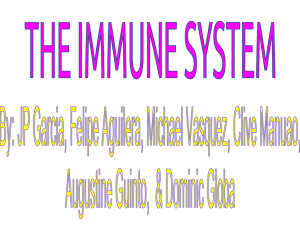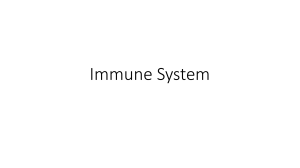Learning Objectives for Chapter 29 Infographics Understand the
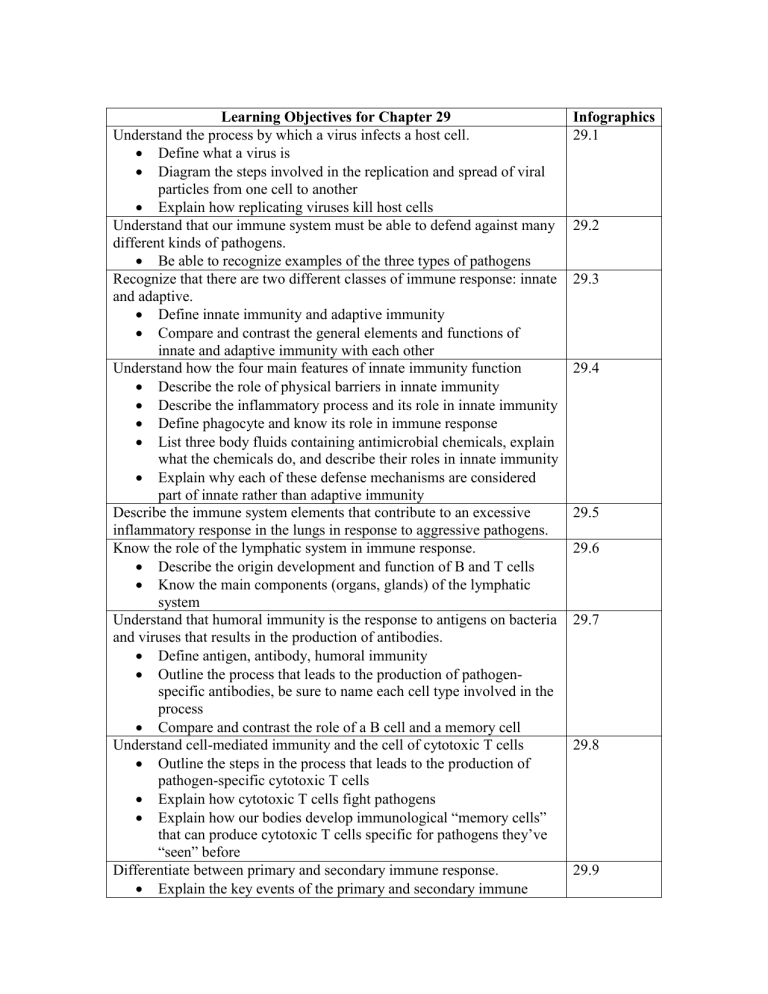
Learning Objectives for Chapter 29
Understand the process by which a virus infects a host cell.
Define what a virus is
Diagram the steps involved in the replication and spread of viral particles from one cell to another
Explain how replicating viruses kill host cells
Understand that our immune system must be able to defend against many different kinds of pathogens.
Be able to recognize examples of the three types of pathogens
Recognize that there are two different classes of immune response: innate and adaptive.
Define innate immunity and adaptive immunity
Compare and contrast the general elements and functions of innate and adaptive immunity with each other
Understand how the four main features of innate immunity function
Describe the role of physical barriers in innate immunity
Describe the inflammatory process and its role in innate immunity
Define phagocyte and know its role in immune response
List three body fluids containing antimicrobial chemicals, explain what the chemicals do, and describe their roles in innate immunity
Explain why each of these defense mechanisms are considered part of innate rather than adaptive immunity
Describe the immune system elements that contribute to an excessive inflammatory response in the lungs in response to aggressive pathogens.
Know the role of the lymphatic system in immune response.
Describe the origin development and function of B and T cells
Know the main components (organs, glands) of the lymphatic system
Understand that humoral immunity is the response to antigens on bacteria and viruses that results in the production of antibodies.
Define antigen, antibody, humoral immunity
Outline the process that leads to the production of pathogenspecific antibodies, be sure to name each cell type involved in the process
Compare and contrast the role of a B cell and a memory cell
Understand cell-mediated immunity and the cell of cytotoxic T cells
Outline the steps in the process that leads to the production of pathogen-specific cytotoxic T cells
Explain how cytotoxic T cells fight pathogens
Explain how our bodies develop immunological “memory cells” that can produce cytotoxic T cells specific for pathogens they’ve
“seen” before
Differentiate between primary and secondary immune response.
Explain the key events of the primary and secondary immune
Infographics
29.1
29.2
29.3
29.4
29.5
29.6
29.7
29.8
29.9
responses
Compare and contrast the timeline for primary and secondary response
Compare and contrast the processes of antigenic drift and antigenic shift. 29.10

